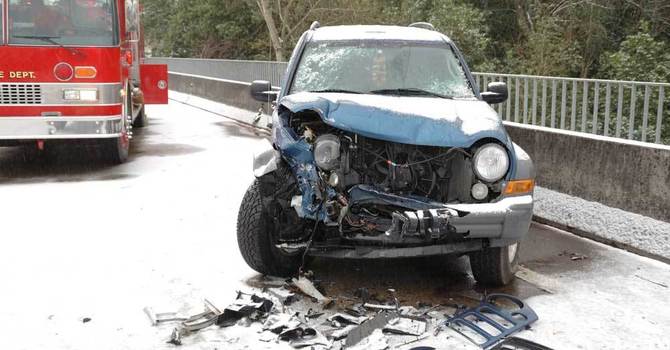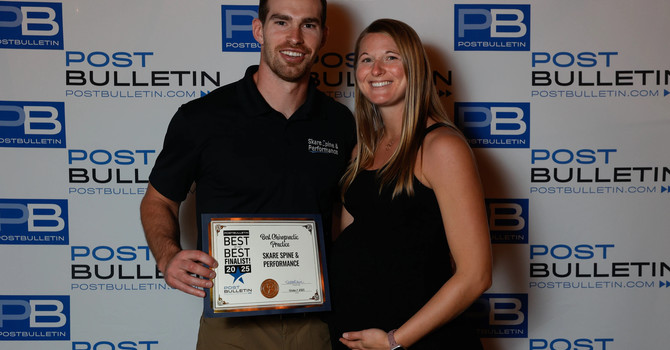
With fall sports back in full swing, we are offically back in ankle sprain season.
With over 2 million athletes spraining an ankle per year- and medical costs exceeding $1.1 billion in treating ankle sprains annually, it is essential to know how to effectively treat and prevent an ankle sprain from occurring again.
So now that you’ve rolled it, what do you do?
Here are three things you need to know about ankle sprains.
#1 RICE or not to RICE?
RICE (rest, ice, compress, elevate) has been the standard for musculoskeletal injuries, especially ankle sprains, for decades. In most cases, rest and ice are no longer advised as research, and other tested methods have improved outcomes.
Even the creator of the RICE method has recently said, “Coaches have used my “RICE” guideline for decades, but now it appears that both Ice and complete Rest may delay healing, instead of helping.” — Dr. Gabe Mirkin.
“There is no evidence that the isolated application of ice can decrease pain and swelling, as well as improve function among persons with an acute ankle sprain (level 2),” another research study concludes. (1)
Conventional rehab tells us that RICE is the protocol to use and was one I followed when I was playing basketball.
But how should you treat an ankle sprain?
#2 Treating a sprained ankle.
Following a severe ankle sprain, it is important to get it examined to determine if you need X-rays or if there is ligament damage. A fracture or grade 3 anterior talofibular ligament (ATFL) sprain will change treatment.
If it is a common sprain, loading, balance training, and movement rehabilitation should begin immediately now that research and modern treatments are abandoning the RICE protocol.
The goal is to restore strength, flexibility, balance, and endurance as quickly as possible during the first few days following the injury is the goal.
So, what to do:
Work on spreading your toes, writing the alphabet with your toes, and using an ankle rock board to help regain range of motion if you cannot put weight on your ankle immediately following a sprain.
A rock board we use in the office, designed specifically to rehabilitate ankle sprains, helps increase range of motion, and to strengthen muscles to help pull your ankle out of vulnerable positions. Tom Michaud, one of the world’s experts in lower extremity injuries, created it.
Balance training and ankle loading can begin once you can walk semi-comfortably. Balance training can be as simple as standing on one leg, progressing to eyes closed, or using a pad to create more of a challenge.
Dynamic movements and strengthening of the calf and intrinsic foot musculature will begin to your tolerance. Progressing to hopping and sport-specific exercises will get you ready for competition again.
Dry needling and chiropractic adjustments are additional treatments we use at Skare Spine and Performance.
Dry needling is an effective tool to speed up the healing process. Often injured in sprains, the fibularis longus and tibialis anterior are two important muscles involved with ankle stability. Dry needling has been shown to increase their activity following sprains. (2)
This is important because sensory input to the brain can get disrupted and shut down muscles when there is trauma and damage to the joints they cross.
Dry needling also creates a response in the body to heal the area, helping ‘turn on’ those muscles. Chiropractic adjustments help improve range of motion, return ankle function, and reduce pain. (3)
#3 Help prevent the next one… or the first one.
So, you’ve had an ankle sprain, but it feels fine now. Do you still need to rehab it?
Or are you chronically spraining your ankle, and you’ve given up on it? Rehabilitation is essential because the most common predictor of injury is prior injury. If you have had an ankle sprain before, you’re at increased risk for another one.
Studies show that runners with prior history of ankle sprains are 19 times more likely to suffer another ankle sprain (4).
“Given the intrinsic characteristics of basketball practice and its specific physical demands, more than 70% of basketball players who suffer an acute ankle sprain will develop recurrent sprains between 6 weeks and 18 months after the initial injury, with approximately 20–40% developing chronic ankle instability” another research study has shown. (1)
Prior ankle sprains can impair coordination and create calf tightness because the body produces a “protective pattern” and locks up the muscles and surrounding joints after a previous injury.
What can be done?
Athletes treated with balance board exercises reduced subsequent reinjury rates by 47% (5). Balance board exercises or a foam pad help create an unstable platform to train proprioception and strengthen stabilizing muscles in the foot and ankle.
Tom Michaud’s “Toe Pro” strengthens intrinsic foot muscles and the fibularis longus.
Core control and hip strength are also essential to help control the lower extremity.
While no injury can be entirely prevented, “an ounce of prevention, is worth a pound of cure.”
Following an acute ankle sprain:
- See a provider for orthopedic testing and to determine if X-rays are needed. It is crucial to determine if there is a fracture risk or severe ligament damage.
- Start moving and walking on your ankle as much as possible to regain your range of motion.
- Progress as you are comfortable to progress to balance training, hopping, and sport-specific exercises
If you want to speed up your recovery or have questions, contact us at Skare Spine and Performance in Rochester, MN.
- Halabchi, F., & Hassabi, M. (2020). Acute ankle sprain in athletes: Clinical aspects and algorithmic approach. World journal of orthopedics, 11(12), 534–558. https://doi.org/10.5312/wjo.v11.i12.5342.
- López-González L, Falla D, Lázaro-Navas I, et al. Effects of Dry Needling on Neuromuscular Control of Ankle Stabilizer Muscles and Center of Pressure Displacement in Basketball Players with Chronic Ankle Instability: A Single-Blinded Randomized Controlled Trial. Int J Environ Res Public Health. 2021;18(4):2092. Published 2021 Feb 21. doi:10.3390/ijerph180420923
- Pellow JE, Brantingham JW. The efficacy of adjusting the ankle in the treatment of subacute and chronic grade I and grade II ankle inversion sprains. J Manipulative Physiol Ther. 2001;24(1):17-24. doi:10.1067/mmt.2001.112015
- Tyler TF, McHugh MP, Mirabella MR, Mullaney MJ, Nicholas SJ. Risk factors for noncontact ankle sprains in high school football players: the role of previous ankle sprains and body mass index. Am J Sports Med, 2006;34:471-475.
- Verhagen E, van der Beek A, Twisk J, et al. The effect of proprioceptive balance board training for the prevention of ankle sprains. Am J Sports Med, 2004;32:1385-1393.

Nate Skare
Contact Me



